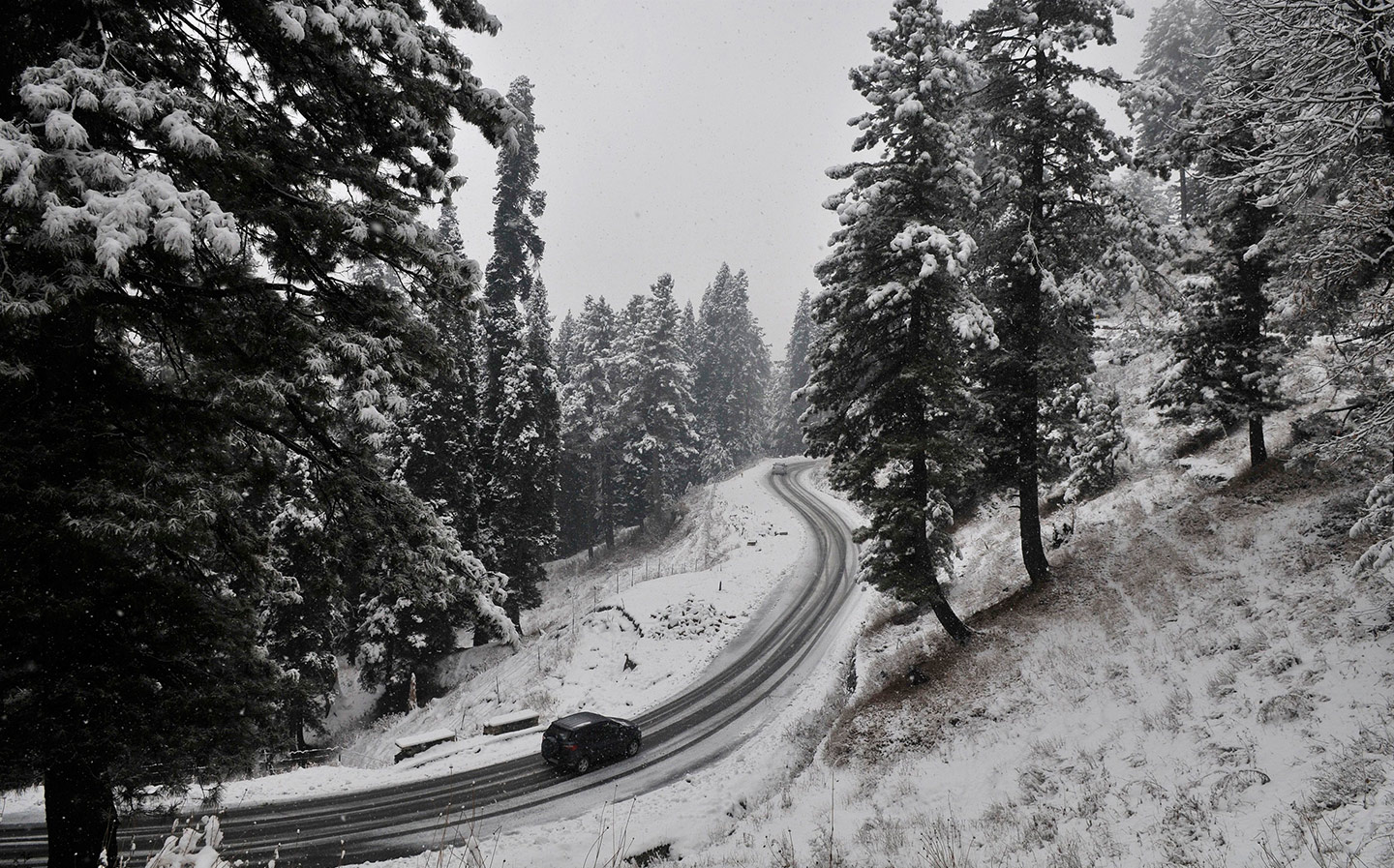How to drive on snow and ice
Escape the scrapes
Whenever Britain receives a significant amount of snowfall, as is forecast this week, many drivers are caught out and accidents become much more likely as driving on snow and ice means significantly reduced grip from the tyres.
Most UK drivers lack the winter driving experience of our neighbours in Scandinavia and mountainous areas of Europe, for whom heavy snowfalls are a regular occurrence, and in the UK specialist winter tyres aren’t required during winter months, as they are in some European countries, due to our relatively warm climate. All of which means drivers can panic when we do get a covering of snow.
Sometimes conditions can be so bad that the authorities inform drivers not take to take to the roads at all, and of course drivers must heed that advice. But if you’re caught out by sudden snowfall and the gritting lorries are failing to keep up, then knowing how to drive in snowy and icy conditions can be the difference between a crash and making it home unscathed.
That’s why it does no harm to be reminded of the dos and don’ts of driving in the snow. Follow these steps on how to drive on snow and ice and you’re more likely to escape a scrape.
1. Remove all snow and ice

If your view of the road is obscured by snow, frost or fog, you’re breaking the law.
Clear the windscreen, side windows and door mirrors before setting off. Brush snow off the roof, too, as that could slide down onto the windscreen once you’re moving.
- Check out the best ice scrapers to buy
A word of warning: do not leave your car’s engine running to defrost the windscreen as it’s illegal to do so and drivers can be fined. Electric cars have an advantage here, as many can be defrosted remotely via a mobile app before you need to hit the road.
Lights must be cleared, too, and driving school Bill Plant recommends making your headlights as clean as possible, so that they’re working to their full capability during the darker months.
2. Should you let air out of your tyres in snow?
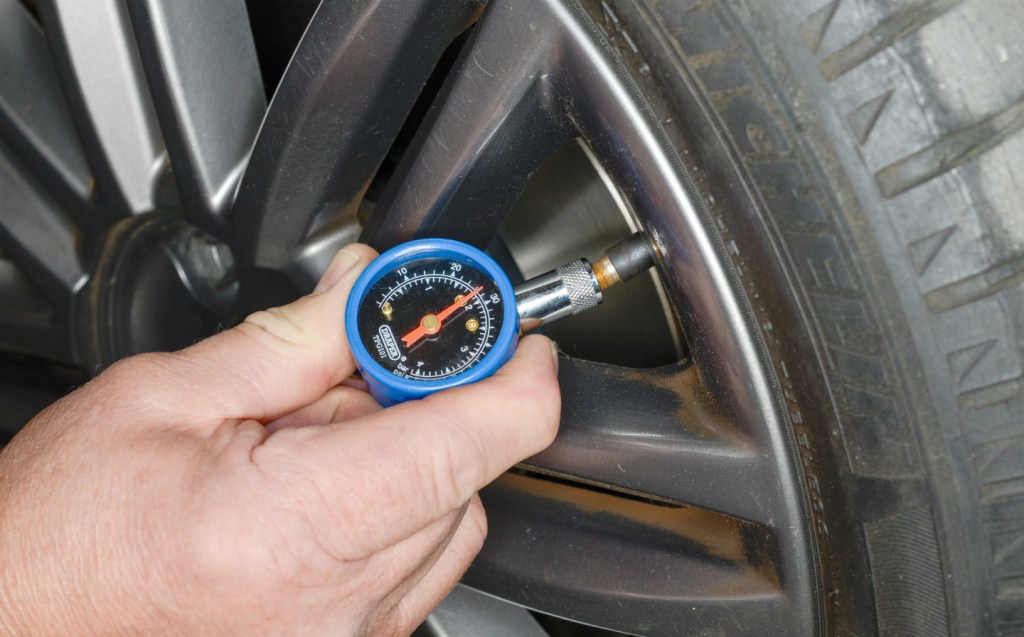
It’s an oft-repeated myth, but reducing your tyre pressures will not help your grip on snow, according to the experts.
“Your tyres are designed to function at a certain pressure and changing that could be dangerous,” said Adrian Tink of the RAC. “The most important thing is to make sure you have sufficient tread depth.”
In Britain that means at least 1.6mm of tread, across the width of the tyre. In snow, 3mm will be advantageous.
Winter tyres will also help massively, though many Brits may find that switching from summer tyres to all-season tyres for use all year round could prove to be a brilliant decision when the snow does fall. On a recent test we found all-season tyres aren’t the compromise that they used to be.
And, of course, modern four-wheel drive is a big advantage for both traction and stability, helping to keep the car pointing in the right direction.
3. Do your checks
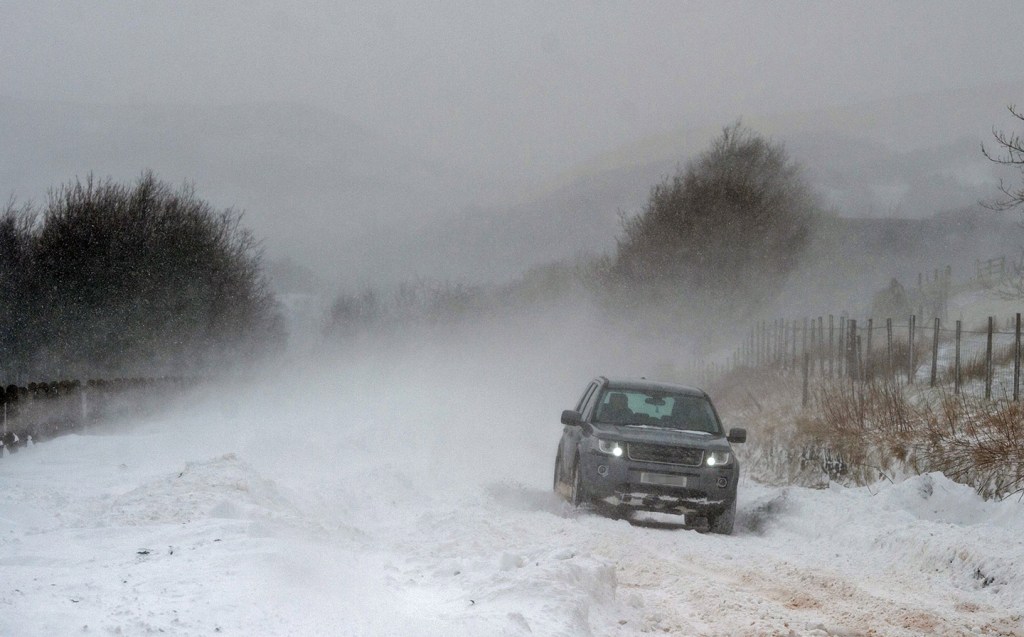
It’s important to make sure that your car is in working order before you try to drive in snow, when visibility is poor.
As well as making sure your tyre tread depth is sufficient, Bill Plant points out that you should make sure not only that your headlights and indicators are free of snow but also that they are working.
Don’t forget your fog lights — you never know when you’ll come across a patch of fog in winter, and a snowstorm can reduce seriously reduce visibility, at which point front and rear fog lights will help other drivers see you. Just remember that the law says you MUST switch them off when visibility improves.
4. How do you set off, or drive uphill or downhill in snow?
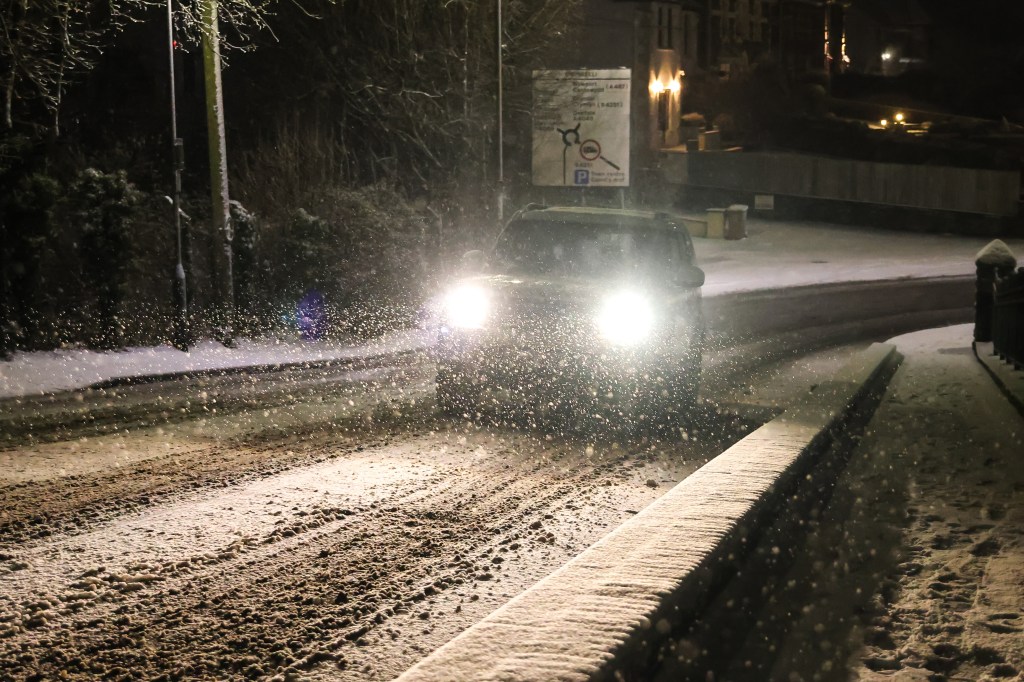
If you have a manual car, try setting off in a higher gear (second or third) when driving on snow and ice. This reduces wheel rotations, lessening your chance of spinning the wheels — once traction is lost, control is lost. Engage the clutch slowly and gently.
This is especially helpful when going uphill, though modern traction control systems may be able to do the job for you by automatically cutting power to prevent the wheels spinning, and thereby provide more grip.
When slowing down or heading downhill in a manual car, go down through the gears and allow the engine to slow the car as much as possible. Don’t keep your foot on the clutch as that removes the advantage of engine braking.
If you have an automatic or electric car, look for a winter or Snow & Ice mode button, which will reduce power from the motor to the wheels, as well as managing the transmission and how much wheelspin is allowed.
5. Reduce your speed
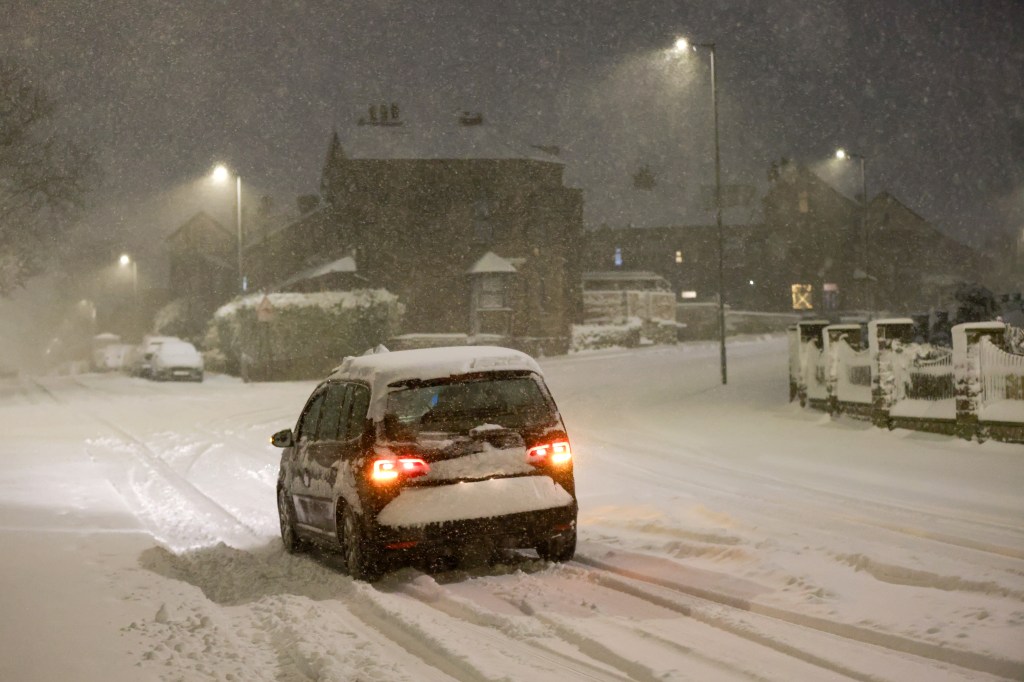
This is an obvious one but too much speed when you drive on snow and ice will increase the risk of losing control. Sometimes skids are unavoidable but losing control may suggest you were driving too fast for the conditions.
6. Steer into the skid
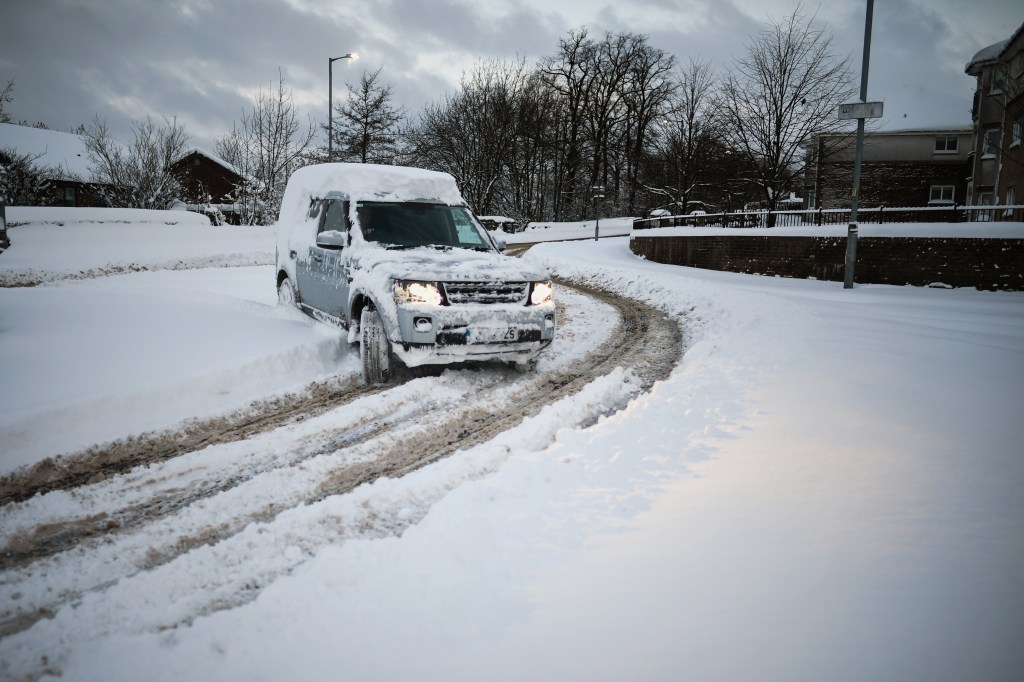
If you do find yourself sliding, it’s important not to lose your head. The experts at Bill Plant said: “You should steer into a skid; this will help get the car straight and back on track.”
If you’ve no idea what this means, in layman’s terms: if it feels like the back of the car is sliding left, turn the steering wheel to the left, too, to point the front wheels in the direction of travel, and vice versa.
7. Keep a larger gap to the car in front
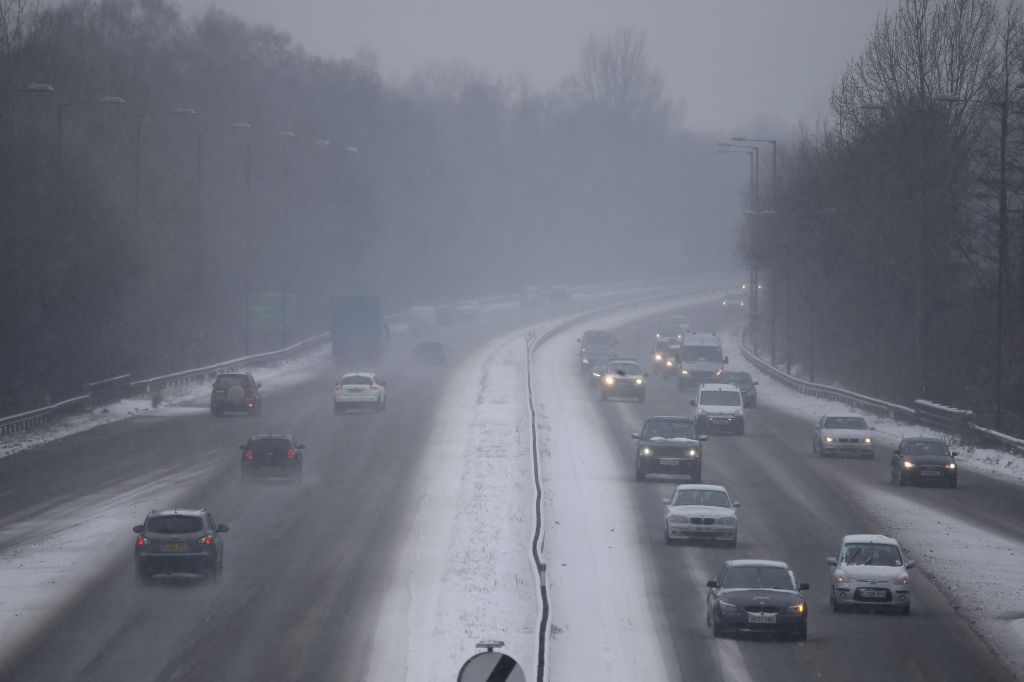
Stopping distances increase massively on snow and ice — the Highway Code says they can be 10 times longer.
Leave a 10-second gap between you and the car in front. This applies to 4×4 drivers as well, who may find it easier to gain traction as they head out of a snowdrift but will have the same grip issues when stopping.
8. No sudden movements
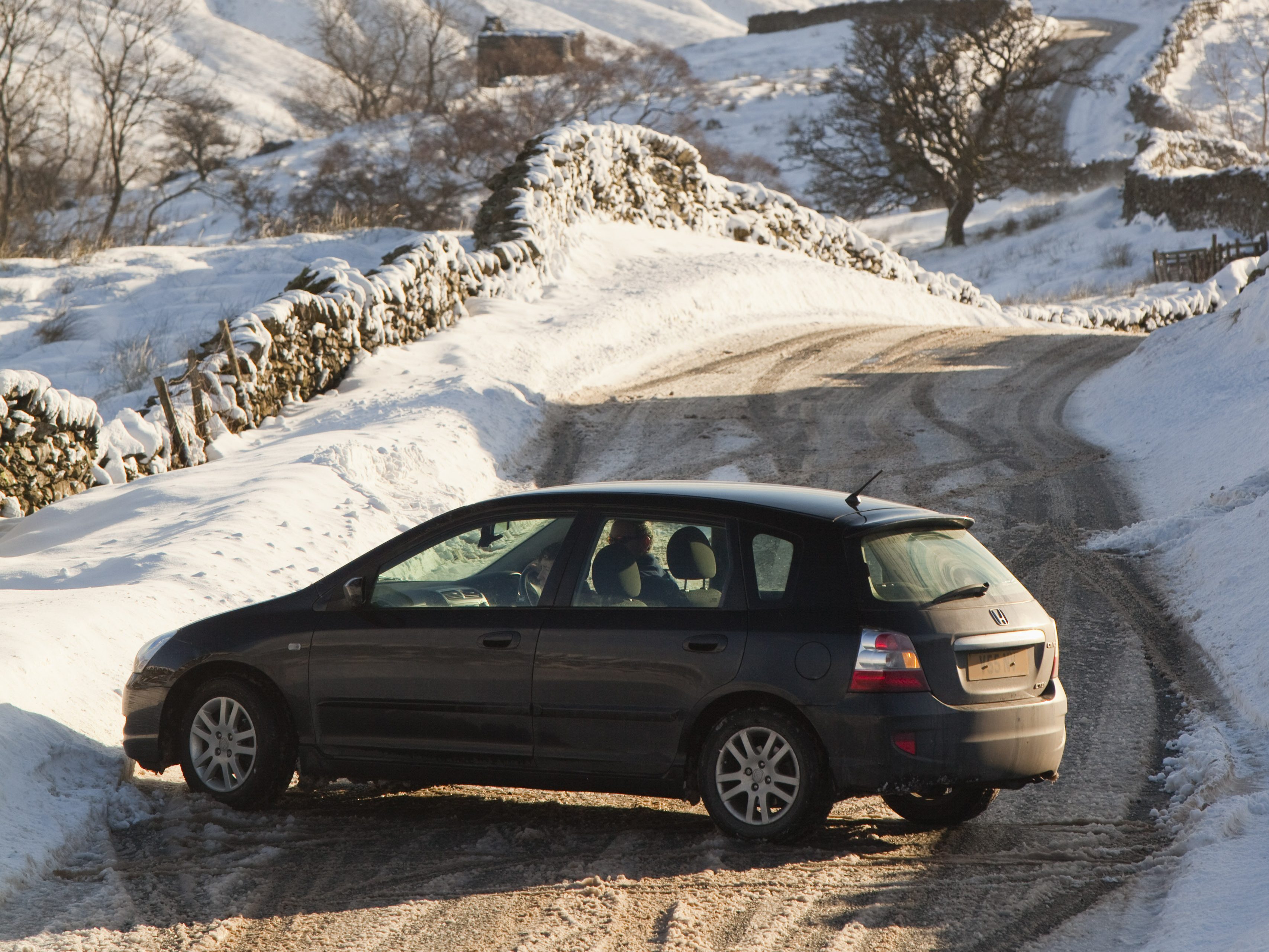
Any harsh braking or steering is bad in these conditions. Look well ahead and when cornering, reduce speed early by lifting off the accelerator gently, before using the brakes to reduce speed. Then take your foot off the brakes before turning, and feather the steering and accelerator through the turn.
Accelerating hard out of the corner could spin the wheels and cause a skid.
9. Don’t be afraid to use the brakes
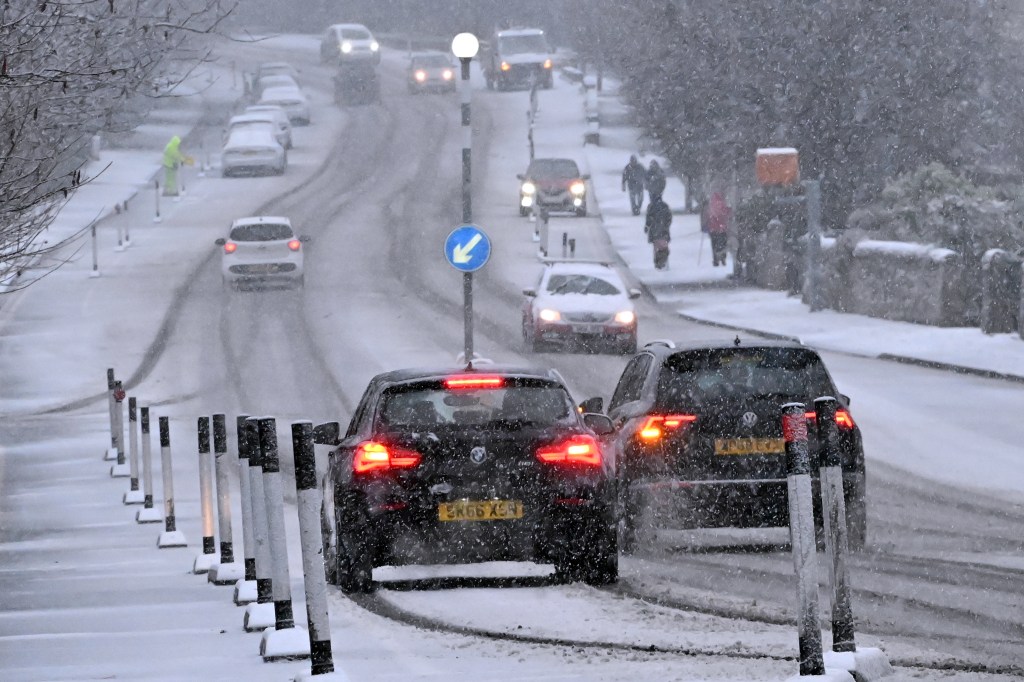
If everything suddenly goes eerily quiet, the chances are you’re driving on ice. Black ice most often builds up on bridges and underpasses, where there is cold, wet air passing above and below the surface.
Whereas the advice used to be not to stand on the brakes when you hit ice, as older cars will lock the wheels, most modern cars have sophisticated computer-controlled anti-lock brakes and stability systems. So if you lose traction in a new-ish car, brake with full force and the electronics should do the rest.
If you don’t have ABS, you may still use the brakes but very lightly (called “threshold braking”); you want to avoid locking the wheels, as that provides zero control.
Another technique known as cadence braking involves pumping the brake pedal, which is basically how ABS works (though the car will be able to do it much faster than a human). Or you could use a combination of these techniques. The important thing is to allow the braked wheels to rotate.
Whatever, be sure to do your braking in a straight line before a corner, rather than while turning, as that could induce a spin or understeer (where the car travels straight instead of turning).
10. Electric car owners — keep an eye on range
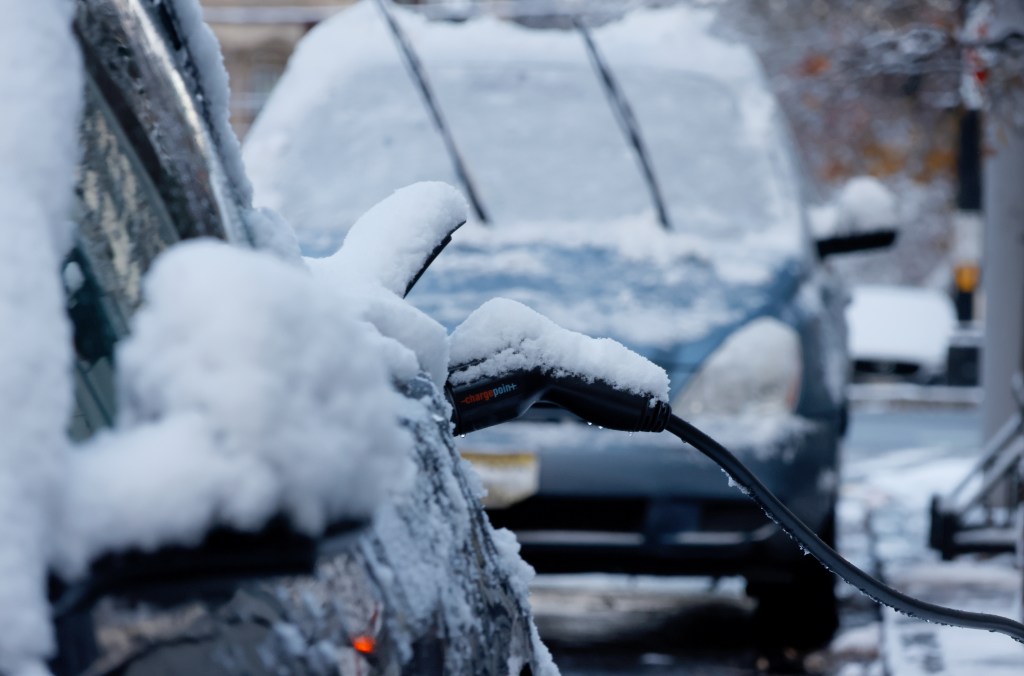
Due to their chemistry, the batteries in electric cars work best at a certain temperature — somewhere between 15°C and 25°C. That means that the single-figure temperatures of a British winter are not their forte, and it’s estimated that nippy weather can reduce an EV’s range to the tune of about 20%.
You should keep an eye on your car’s remaining range, as well as on your nearest charging points. If you suffer from range anxiety, there are an increasing number of electric cars available with more than 300 miles of range, as well as ones with ultra-rapid charging capability, and new charging points are installed every day.
Do you need snow tyres to drive in snow?
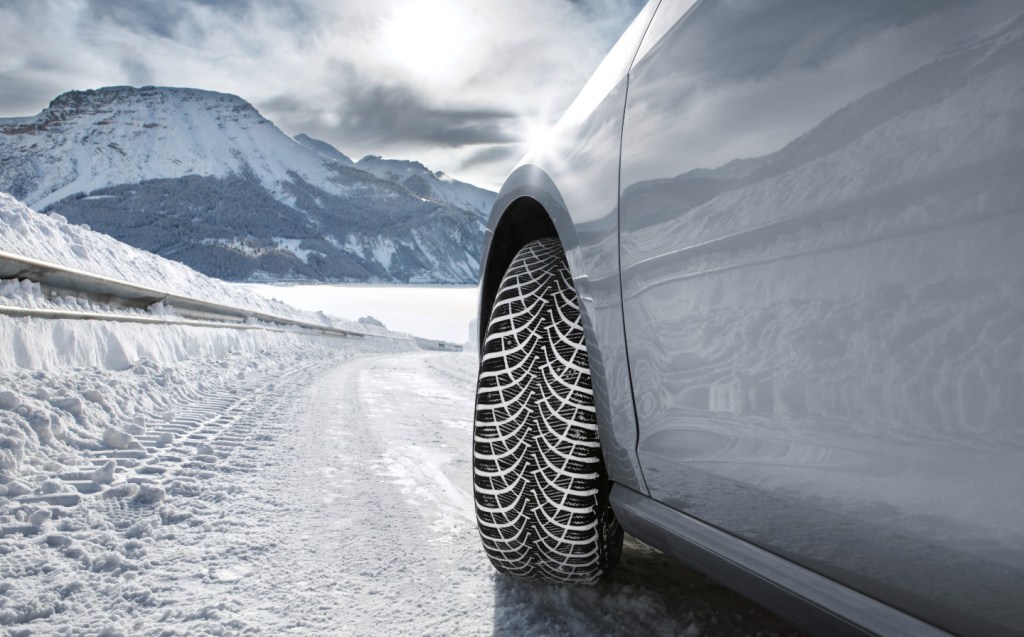
There are several options for your wheels when driving in snow: winter (or snow) tyres, snow chains or snow socks.
Winter tyres: made from a different rubber compound from conventional tyres, that does not harden so much in colder temperatures and so improves traction below 7C.
Different tread patterns help improve grip and reduce stopping distances.
They cost 10%-15% more than conventional tyres and about £50 to fit, but you might find they’re worth every penny.
- Here are some of the best winter tyres you can buy
All-season tyres: Not as effective on snow and ice as winter tyres but they are offer significantly more grip than summer tyres and perform much better than winter tyres on dry roads, making them a sensible choice for use all year round. We tested a set and found grip in corners on snowy surfaces improved 24% compared with summer tyres.
Snow chains: fitted to the driven wheels of the car, chains increase grip by biting through the snow and ice. They are usually sold in pairs and must match a particular tyre size.
Driving with chains will reduce fuel efficiency and limit the speed to 20-30mph. They must be removed before driving on clear roads, and fitting can be fiddly. They cost £50-£150 a set: buy at Halfords.com
Snow socks: a cheaper alternative that you pull over the tyres of the driven wheels. They are made of a textile that optimises grip on the road.
Simpler to fit than snow chains, they cost about £50 a pair. Drivers must keep below 50mph. Buy at Halfords.com
Is my car insured to drive in snow?
Your car insurance will still be valid if you take it out in the snow — it’s very unlikely there will be a clause specifically prohibiting it. But you need to be careful, as certain things could invalidate the policy.
For example, if your insurer believes you were negligent in heading out onto the road, say by driving dangerously or ignoring road closures, then a claim could be in jeopardy.
A spokesperson for the Association of British Insurers told The Scottish Sun: “We would urge all drivers to pay close attention to advice from local authorities and the emergency services in areas affected by snow – particularly where there is a red warning.
“People’s safety is paramount. However social media rumours that motor insurance will be invalid if people drive during a red warning are not true. Motor insurance will cover you in the usual way, providing you are driving within the law.”
What is illegal when driving in snow?
Be sure to avoid these key things if you don’t want the police to stop you and issue a fine or break the terms of your insurance.
1. Not defrosting the car
Rule 229 of the Highway Code says that before you set off you must be able to see, so clear all snow and ice from all your windows — peering through a hole in the windscreen is not good enough — get all the snow and ice off, and demist thoroughly. You should do the same with the mirrors.
You must also ensure that lights are clean and number plates are clearly visible and legible.
If you struggle to find time to remove the snow, ice and frost from your car windows in the mornings, you might consider investing in a car windscreen cover to keep your glass clear.
2. Not removing snow from the roof or bonnet
The Highway Code says to remove all snow that might fall off into the path of other road users. That means from the roof, bonnet and boot.
It’s not illegal to drive with snow on the roof but driving “without due consideration” is going to get you collared by the law, because clumps could slide on to the windscreen or onto another car, cyclist or pedestrian. In extreme cases you may be judge to be using a motor vehicle “in a dangerous condition”.
3. Idling your engine
One thing drivers mustn’t do is let the car’s engine idle to defrost the windscreen. Rule 123 of the Highway Code says that “you must not leave a vehicle’s engine running unnecessarily while that vehicle is stationary on a public road.” Drivers caught doing so could face a fine of £20 or double that if not paid within 28 days.
In the absence of a car windscreen cover and rather than idling their engines, drivers should invest in a window scraper or a can of de-icing spray to clear their frozen windscreens.
Alternatively, a jug or kettle filled with barely lukewarm water will suffice, though be warned: if the water is too hot the thermal shock may crack the windscreen.
4. Not using headlights
Snow means clouds, which generally means dim conditions, and when it’s snowing visibility is decreased further. The Highway Code says you must use headlights when visibility is “seriously reduced, generally when you cannot see for more than 100 metres (328 feet)”.
Using fog lights can be sensible but the important thing is to switch them off when visibility improves, as driving with them on when they’re not needed is illegal.
5. Not checking the route
The Highway Code says you should check your planned route is clear of delays and that no further snowfalls or severe weather are predicted. It is illegal to drive when local weather warnings have been issued, unless it’s an essential journey.
Essential safety kit for driving in snow
The Highway Code says to take an emergency kit in case you get stuck or your vehicle breaks down. Here’s a list of items to keep in the car:
- Blanket/sleeping bag
- First aid kit
- Torch (with batteries)
- Rope
- De-icer and scraper
- Mobile phone charger
- Spare headlamp bulbs
- Jump leads
- High-visibility vest
- Shovel
- Tyre pump
- Water
- Warm drink
- High-energy snacks and emergency food
- Wellington / snow boots
- Hat and gloves
Related articles
- If you found our tips for driving in the snow helpful, you might also enjoy our guide to what to do if your car gets stuck in snow
- Porsche 911 Dakar video review: Getting to grips with off-road 911 on snow
- Also, check out this near-miss of a bus that lost grip on ice
Latest articles
- Seven great automotive events to visit this summer, from F1 to art and champagne
- Watch new Porsche 911 GT3 smash Nürburgring record for manual cars
- Skoda Elroq 2025 review: Czech carmaker can’t seem to miss with its electric family cars
- Five best electric cars to buy in 2025
- Should I buy a diesel car in 2025?
- F1 2025 calendar and race reports: The new Formula One season as it happens
- Zeekr 7X AWD 2025 review: A fast, spacious and high tech premium SUV — but someone call the chassis chief
- Denza Z9GT 2025 review: Flawed but sleek 1,062bhp shooting brake from BYD’s luxury arm
- Extended test: 2024 Renault Scenic E-Tech review


